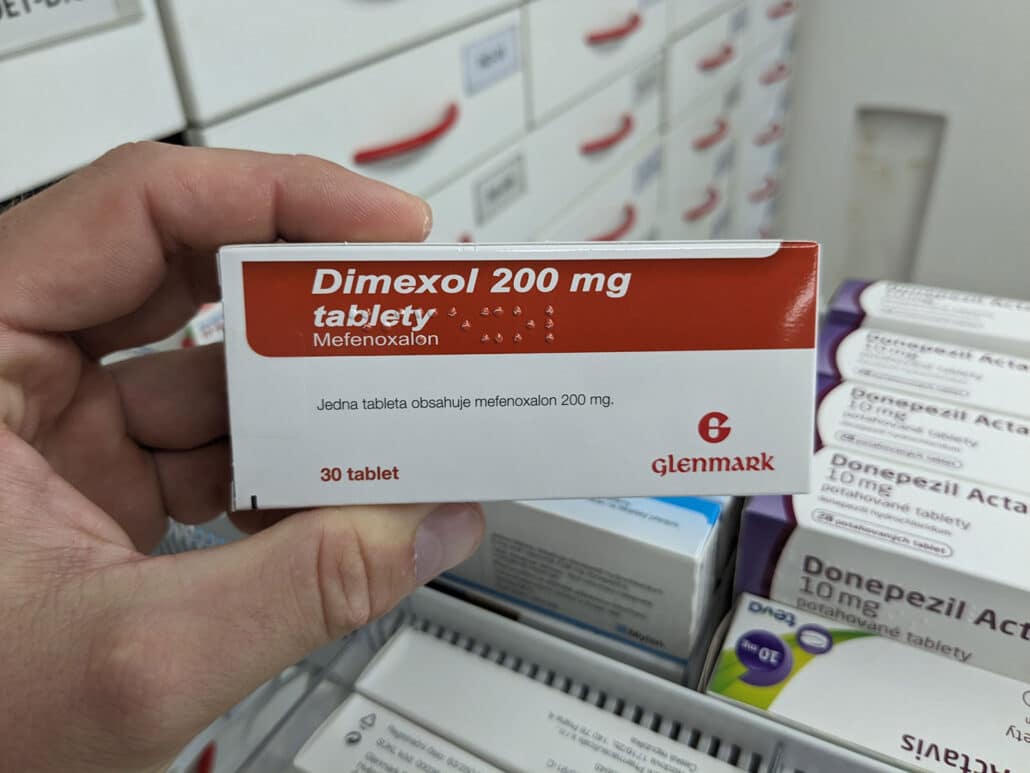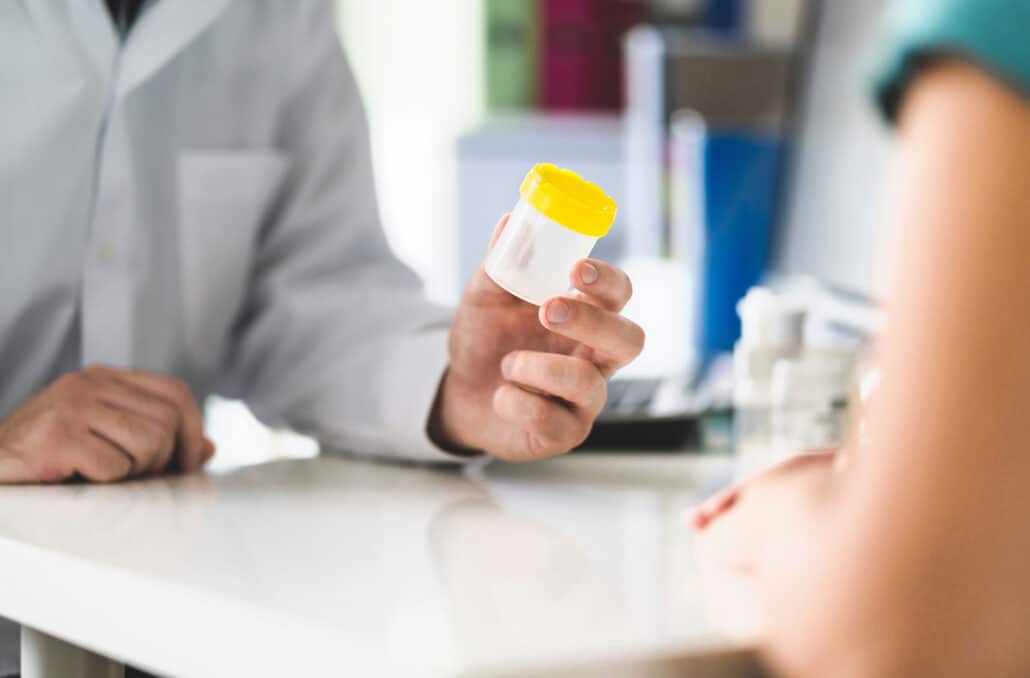When starting new medications of any kind, it’s natural to have questions about how long they will remain in your system. Methocarbamol, a muscle relaxant often prescribed to ease muscle pain and relieve muscle spasms, is no exception to this rule. Many people rely on methocarbamol (brand name Robaxin) to help manage conditions such as back pain or discomfort after an injury, such as sprains or strains. When used as directed under a doctor’s guidance, this medication can be a safe and effective part of a treatment plan. However, if you’re taking this drug, you may wonder: How long does methocarbamol stay in your system, and what factors influence the answer?
Whether you’re concerned about a drug test, curious about lingering side effects, or worried about the possibility of misuse, understanding the basics can help put your mind at ease. In this article, we’ll look at how methocarbamol is processed by the body, discuss how long it typically lasts, and what can affect its duration.

Table of Contents
How Methocarbamol Is Processed in the Body
Methocarbamol works by influencing the central nervous system to reduce muscle spasms and ease pain. Unlike some medications that target a very specific process in the body, methocarbamol’s exact mechanism of action isn’t fully understood. What we do know is that it helps calm the nervous system activity that contributes to muscle tension, making it easier for the skeletal muscle to relax. When taken as prescribed, methocarbamol can provide significant relief from pain and discomfort, making everyday activities more manageable.
After you swallow a dose of methocarbamol, your body begins breaking it down relatively quickly. Methocarbamol is primarily processed by the liver, which metabolizes it into various metabolites. After that, the medication and its byproducts are excreted through the kidneys and passed out of the body in urine. The medication’s half-life, which is the time it takes for half of the drug to be eliminated from the body, usually ranges from about one to two hours. This half-life is an important detail because it helps determine how long the drug’s presence in your system can be detected as well as how long its effects of methocarbamol might last.
While the half-life of methocarbamol is short, that doesn’t mean the drug disappears from your body instantly. It can still take a bit of time before the medication is fully cleared, and this process can vary from one individual to another, depending on several factors.
How Long Methocarbamol Stays in Your System
On average, methocarbamol tends to remain in a person’s system for up to about 24 hours after the last dose. After that point, levels of the drug in the body should be quite low. For most people, the medication is metabolized and eliminated efficiently. Even though it doesn’t stick around for a very long time, the exact duration can depend on various factors.
It’s also worth noting that methocarbamol is not something typically tested for in standard drug screenings. Common workplace drug tests, for example, are generally looking for substances like opioids, THC, cocaine, or amphetamines. Methocarbamol doesn’t usually show up in these panels. If there is a reason to look specifically for methocarbamol, specialized blood tests might be required, but these are not common.
In most cases, standard drug tests do not include methocarbamol because it’s not considered a controlled substance. This means that while you might be worried about it lingering in your body, it’s not among the drugs employers, legal authorities, or routine screening programs will typically test for.

Detection Times for Methocarbamol
While there isn’t an abundance of research on precise detection windows for methocarbamol, a general guideline is:
- Average presence in the body: Up to about 24 hours for most healthy adults.
- Drug testing: Standard drug tests usually do not target methocarbamol specifically.
Because methocarbamol is eliminated from the body relatively quickly, it isn’t known for producing long-lasting issues with drug tests or lingering side effects. However, for anyone who has been taking high doses or using it for extended periods, it’s always wise to consult with a healthcare professional before abruptly stopping the medication.
| Test Type | Detection Window | Notes |
| Blood Test | Up to 24 hours | Detection times may vary based on dosage and metabolism. |
| Urine Test | Up to 48 hours | Typically detectable within 2 days after last dose. |
| Saliva Test | Not commonly detected | Saliva tests are uncommon for methocarbamol. |
| Hair Test | Up to 90 days (rarely used for methocarbamol) | Hair tests are rarely used and depend on chronic use. |
Factors That Influence How Long Methocarbamol Stays in the System
Although 24 hours is the standard timeframe for methocarbamol leaving the system, the exact amount of time can be influenced by several variables:
- Dosage and Frequency of Use: Someone taking higher doses or using methocarbamol regularly over a long period might have it linger slightly longer than someone who only took a single, low-dose pill.
- Metabolism: People’s bodies process drugs at different speeds. A young, healthy adult with a fast metabolism might clear methocarbamol from their system faster than an older adult or someone with certain medical conditions, such as kidney disease.
- Liver Function: Because the liver is the main organ responsible for metabolizing methocarbamol, individuals with compromised liver function might find that the drug stays in their system longer.
Concerns About Methocarbamol Use
When taken as prescribed, methocarbamol is generally well-tolerated and considered safe for short-term use for the relief of muscle spasms and associated pain. However, like any medication, misusing the drug or combining it with other substances can lead to problems. Some people may be tempted to take more methocarbamol than recommended, believing it will provide quicker or stronger relief. Others might consider mixing it with alcohol or other drugs, either to enhance its effects or just to experiment. This kind of misuse is risky.
Mixing methocarbamol with alcohol, for instance, can intensify sedation because both are central nervous system depressants. This combination can impair judgment, coordination, and reaction times, increasing the risk of accidents. In some cases, mixing methocarbamol with other substances, especially other CNS depressants like benzodiazepines (e.g., diazepam), can lead to dangerous respiratory depression or other health complications. Always follow your doctor’s guidance and ask about possible drug interactions with medications or supplements you’re already taking.
Dependency can potentially develop if someone uses methocarbamol improperly for an extended period. Although it’s not typically considered a highly addictive drug, any medication that changes how the brain experiences discomfort and relaxation can lead some individuals to abuse it. If you notice signs, such as feeling unable to function without the drug or experiencing mood swings related to its use, it might be time to seek professional help and consider tapering off your usage.

Side Effects of Methocarbamol
Methocarbamol is a muscle relaxant commonly prescribed to alleviate muscle spasms and discomfort. While effective, it can cause a range of side effects:
Common Side Effects
- Drowsiness: A prevalent effect, leading to increased sleepiness.
- Dizziness or Lightheadedness: Feelings of unsteadiness or faintness.
- Blurred Vision: Difficulty focusing or seeing clearly.
- Headache: General head pain or discomfort.
- Upset Stomach or Nausea: Gastrointestinal discomfort or queasiness.
These side effects are generally mild and may diminish as your body adjusts to the medication. If they persist or become bothersome, consult your healthcare provider.
Serious Side Effects
While rare, some individuals may experience more severe reactions:
- Allergic Reactions: Symptoms include rash, itching, swelling (especially of the face, tongue, or throat), severe dizziness, and difficulty breathing.
- Slow Heart Rate: Noticeable decrease in heart rate.
- Yellowing of Skin or Eyes (Jaundice): Indicates potential liver issues.
- Confusion or Memory Problems: Cognitive difficulties or forgetfulness.
- Seizures: Convulsions or sudden, uncontrolled body movements.
Seek immediate medical attention if you experience any of these serious side effects.
Precautions
- Alcohol Consumption: Avoid alcohol, as it can exacerbate drowsiness and dizziness.
- Operating Machinery or Driving: Due to potential drowsiness and dizziness, refrain from activities requiring alertness until you know how methocarbamol affects you.
- Allergies: Inform your doctor if you have a history of allergic reactions to methocarbamol or any of its components.
Always discuss potential side effects and concerns with your healthcare provider before starting methocarbamol. They can provide guidance tailored to your health needs.

Recognizing Signs of Misuse or Dependency
It can be difficult to acknowledge that something prescribed to help you might be causing harm. However, it’s important to stay vigilant about medication abuse, both for yourself and your loved ones. If you or someone you care about is struggling with methocarbamol use, consider watching for the following signs:
- Increasing the dose without a doctor’s recommendation.
- Taking methocarbamol more frequently than directed.
- Feeling anxious or stressed when they aren’t taking the medication.
- Experiencing withdrawal-like symptoms, such as discomfort or irritability, when trying to reduce usage of the medication.
- Continuing to use methocarbamol despite negative consequences in their personal or professional life.
If any of these signs sound familiar, it’s important to realize that you’re not alone, and real help is available for you or your loved one.
How Long Island Interventions Can Help
If you find yourself worried about methocarbamol use, whether it’s your own or that of a loved one, it’s essential to know that you don’t have to face these concerns alone. Organizations like Long Island Interventions specialize in guiding individuals through the challenging waters of substance abuse and prescription medication dependency. They understand that drug addiction can happen to anyone, and their approach is compassionate, nonjudgmental, and rooted in professional expertise.
Long Island Interventions can provide a range of resources, from initial consultations to help you understand your treatment options, to structured, personalized treatment programs designed to address both the physical and emotional aspects of substance misuse. They may also connect you with detox facilities, where you can safely taper off medications under medical supervision, ensuring that withdrawal symptoms are managed and reducing the risk of overdose. They can also guide you toward counseling, group therapy, and other forms of support that help address the underlying reasons behind misuse. They also offer aftercare planning to help you maintain sobriety after completing treatment.

Conclusion
Understanding how long methocarbamol stays in your system is an important step in feeling confident and informed about your healthcare choices. Most people can rest assured that methocarbamol won’t linger for an extended period, usually clearing out of the body within about 24 hours. Still, factors like dosage, metabolism, liver function, and overall health can influence the exact timeframe. By taking the medication as directed, avoiding mixing it with other substances, and paying attention to any changes in how you feel, you can use methocarbamol safely.
If you or someone you care about is struggling with methocarbamol misuse or feels dependent on prescription drugs, remember that help and hope are available. With the right support, it’s possible to regain control of your life and move toward a healthier, more balanced existence. Contact Long Island Interventions today to learn more about the resources and guidance they offer. Taking that first step might feel challenging, but seeking assistance is a powerful act of courage and an important step toward long-term recovery.
Published on: 2024-12-31
Updated on: 2025-04-29

